
Local Motors' Strat 3D Printed Car
Local Motors claims that Strati is the world's first 3D-printed car, but in fact, as early as this April, Jim Kor and his Kor Ecologic team from the United States have also released a 3D-printed car called Urbee 2. . It is a hybrid three-wheeled vehicle. The body material is plastic and the number of parts is about 50. However, Strati was the first 3D-printed car product to really hit the road and accept a media test drive.

Urbee 2, like not a geek?
Introduced here, we can easily see Strati as a simple low-speed electric car. This kind of vehicle is everywhere in some provinces in China. So what's so powerful about it? The answer, of course, is 3D printing. Strati's body panels, hood (and, of course, only cosmetic and aerodynamic requirements on it), chassis light components, were all printed on a 3D printer. Print them for a total of 44 hours.
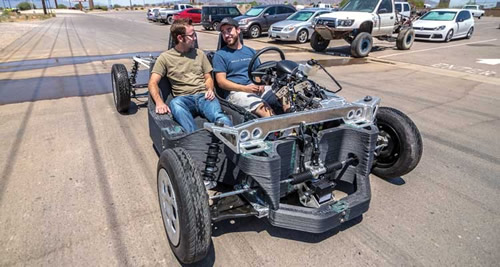
Strati without a body covering is testing
The term 3D printing should not be unfamiliar to us, but how does it work? Perhaps many people do not understand it. At present, many 3D printers have entered commercialization, and prices range from a few K to several W. Its principle is to melt the filaments of the coiled thermoplastic material and then superimpose the raw materials layer by layer on the nozzle according to the 3D digital model. For Strati, its body, chassis and other components, are carbon fiber reinforced thermoplastics. In addition to the body panels and chassis, the parts used in Strati such as seats, glass, batteries, motors, and tires are still traditional methods of manufacture. The printer can be seen here as a "machine tool" for the body parts, but it does not require stamping, welding and other processes.
Officially claimed that Strati only has 40 parts, compared with 20,000 parts of traditional cars, 3D printing makes the production and manufacturing of cars easier. But actually seeing here you should understand that the so-called 40 units should be parts. The so-called 20,000 units are parts. If Strat's motors, batteries, conventional systems, etc. are disassembled, the number of parts will not be a small number.
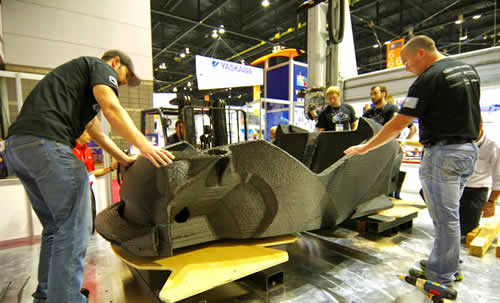
Workers checking the printed Strati chassis
The 3D printing of automobiles is a major breakthrough in the production and manufacture of human vehicles. However, it is too early to say that it poses a revolutionary threat to traditional automobile manufacturing. Why do you say that?
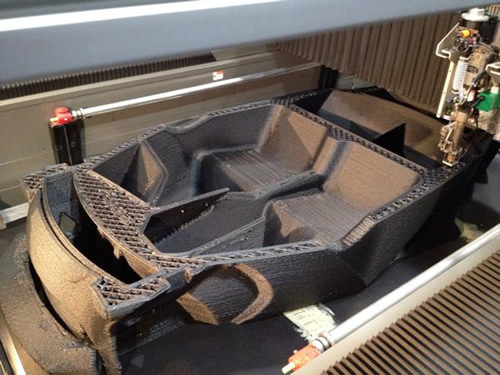
Strati chassis being printed
First of all, the raw materials used for 3D printed body panels are currently only thermoplastic materials, and this obviously does not meet the needs of a truly mass-produced vehicle. Carbon fiber? It sounds like it is feasible, but the cost is not currently acceptable for production cars.
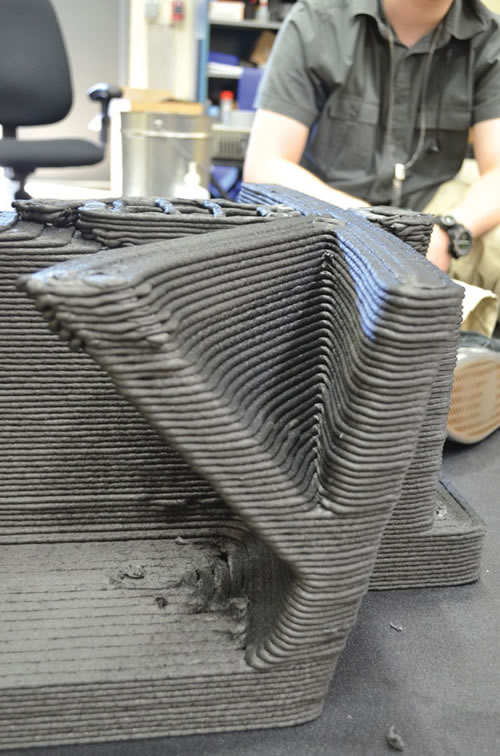
Chassis after printing is completed, very obvious cascading texture
Second, if we take a closer look at Strati's photos, we can see that its body is not shiny. This is because of the material itself. On the other hand, 3D printing is the accumulation of layers after the material is melted. The precision of the nozzle determines that its surface cannot be smooth. Now the domestic market for 3D printers, the diameter of the nozzle is about 0.2-0.5 mm. After the printing is completed, the appearance of the vehicle needs to be polished by grinding the machine tool. So, if you want to use a 3D printed body directly, the roughness is not something we can tolerate.

Polishing after printing is finished, texture remains
Third, the safety of 3D printed cars is the biggest threat to the current mass production. Constrained by raw materials, there are no small security threats in the collisions and spontaneous combustion of 3D printed cars. If these problems are not solved, even if the process problems are improved, it will be difficult to replace the production vehicles.
summary:
The advent of the Strat 3D printing car is an event that we should definitely focus on. However, at this stage, although it has been on the road, it is still only the first-class guinea pigs, and it is still too early to reach mass production. However, no one can tell. After 10 years and 20 years, whether 3D printing cars really wipe out any obstacles and make personalized customization possible. At that time, parts suppliers, 3D printers, and Internet companies might not really have a problem with a conventional car company.
Precision Metal Stamping Parts
Stamping parts are also a relatively common part in industry and life. We are more familiar with automobiles, metal stamping is widely used in the automobile industry. In our daily life, such as TV brackets, electric boxes, battery slices, etc. are all metal stamping products. Stamping is a processing technology in which the metal mold deforms or stretches the sheet metal under the action of external force to obtain the shape and size of the workpiece. It has the characteristics of good surface finish, high precision, stable size, and good rigidity. Because stamping parts need to use high-precision and high-strength molds to produce high-quality, high-precision products, the mold structure is relatively complex, the production cycle is relatively long, and the cost is relatively high. Therefore, general sheet metal stamping parts are more suitable for mass production. Here are some stamped product photos:
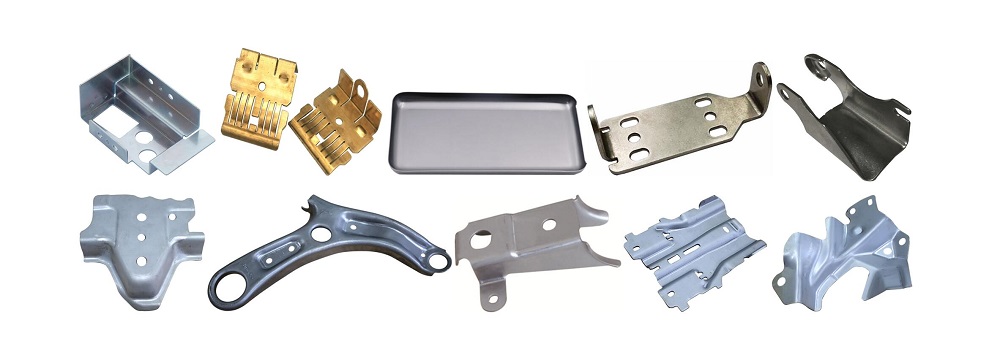
The commonly used sheet metal materials for our metal stamping are CRS, HRS, stainless steel (304, 316, etc.), copper, aluminum and so on. The thickness of sheet metal we can process is 0.5~13mm.
Metal Stamping,Precision Laser,Metal Process,Stamping Business,Stamping Design,Steel Stamping,Stamping Tooling,Electronics Stamping,Brass Stampings,Stamping Parts,Aluminum Stampings,Precision Stamping,Medical Stamping,Stamping Drawing
Shenzhen SCZY Technology Co.,Ltd , https://www.szcasting.com